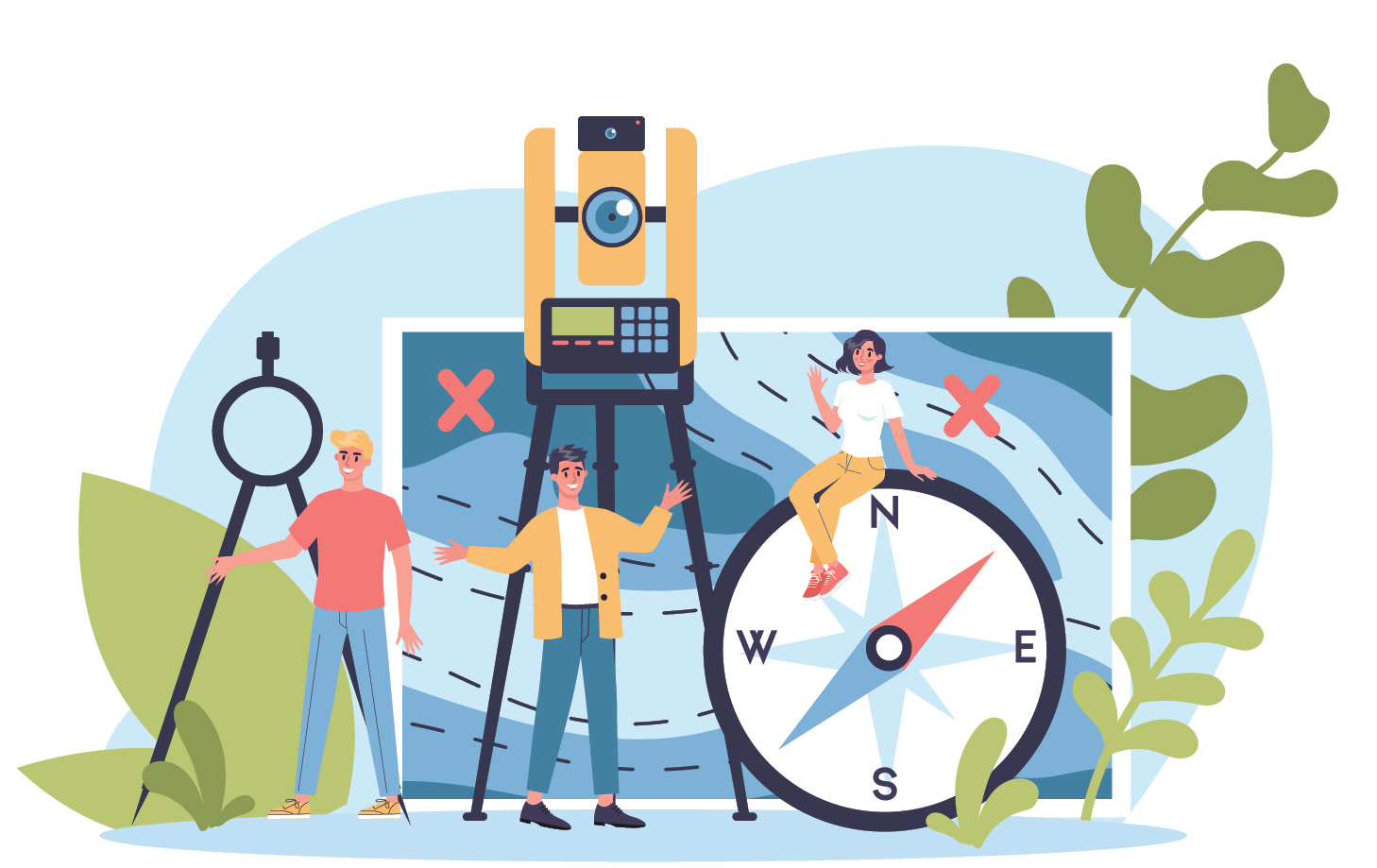In this our fourth edition of the “State of the Surveying Profession” we start with some questions. What really are the surveyor demographics we are currently dealing with? Are they unique to our time? Have they held steady over time? Is one of our problems related more to an increase in the need for surveying services, and less to a decrease in the number of surveyors?
If it’s the former, our perceived “problem” may be distinctively different than if it’s the latter. But for now, we’ll focus on the latter.

Graduating class sizes in the traditional college format of the Vincennes University program from as far back as the mid-1990s are similar to those of the past 6 years (10–12 students per year). Even the most successful and respected surveying programs—past and current—were likely never consistently flush with students. And the fact that universities are no longer (if they ever were) halls of altruism turning out well-rounded students with a life-long yearn for learning, but rather large (or, in many cases, massively large) businesses, exacerbated the termination of highly respected university surveying programs that did not generate large numbers of students and have professors who garnered large research grants. If the number of people entering the profession has stayed somewhat consistent over the past 30–40 years, then why the cry for more people now?

Regardless, we’ve seen frequent articles that talk about related statistics. For example, as mentioned in edition two of this series of columns, in the last few years we have heard, ad nauseam, the oft-repeated claim is that the age of the average surveyor is in the late 50s, or 60’s. But what was it before? We did a quick search but didn’t find an answer; only recent numbers. Is there a study that demonstrates this across all states? Having visited many state conferences, the average age appears to be distinctively different in some states than it is in others.
When we look at demographics as far back as the early presidents who were surveyors, surveying involved an apprentice-based education. What’s changed in the more recent past is the requirement for degrees and testing, which may or may not have narrowed the field. Either way, what can we bring back to widen it?
Formal education is critically important for licensure, but we need to also consider other varied points of entry into the profession. Especially since the pandemic, modalities of obtaining education have loosened up and expanded. Where in the past, those who didn’t start directly into college or vocational training after high school pretty much missed the window of easy access, today with online and hybrid formats a person with a family and a job can more easily switch gears and/or level up.
We can still keep our traditional “straight from high school into college” pathway, but as employers, we should be willing to consider other ways to get people in the door.
Apparently, alternative doorways have been historically common, but we seem not to recognize them. In recent years, Vincennes has started a hybrid/online program to respond to a demand from those who already work full-time in surveying but never received any formal education; these are people interested in advancing their careers. How were they able to get their jobs in the first place? What’s wrong with continuing to utilize those doorways or opening them wider?
Employers, both surveying-specific and in related industries, are desperately shaking down the universities looking for candidates. What they think they need is someone with education. What they usually could most utilize is someone with training and the ability to move up and grow. The majority of what is taught in collegiate classes is intended for someone on the licensure track. But someone with a quarter of that education—the training element—would make a fine employee. As those people grow and mature, and if it is for them, they will seek out the more formal licensure track (if we make the education available and accessible to them).
Times are new. The traditional college format is simply not enough. There is still a place for it and for those who want it. But let’s utilize all the tools in the toolbox and develop more!
What if state societies or society chapters developed brief training days or even comprehensive programs to give that initial skill-set boost to any group of people interested in a career change? Some states are actively working on this.
Adults, in an 8-hour day or two, could learn many of the basic fundamentals of field work (finding monuments, understanding backsights/occupied points/foresights, setting up instruments, terminology, and an overview of the types of surveys performed). A brief training day like this may even be possible for CAD work.
Once they’re hired, provide development opportunities. Whether that be through something like the CST Program of the NSPS, continued training sessions through state societies, or directing them toward a collegiate program for licensure.
Universities can provide opportunities (in both degree and training programs) if they hear there’s a need and support from the profession at large. New Mexico State is a great example of just such a success story. Vincennes University has doubled their number of students historically graduated on the licensure path by expanding into the non-traditional education formats. And Parkland College in Champaign, IL has also developed an alternative program operating on the weekends.
A common reason cited by younger people who drop out of the profession are the roadblocks to developing and growing. If an ample supply of people is created through the entry avenues described above, then as a profession, we need to take it upon ourselves to ensure they can enjoy a meaningful career and, if they want to seek licensure, that they can “make it all the way.”
Let us end with one observation. The surveying profession is not special in the problem of finding people to join the profession, and in the perceived age of the average surveyor. If one reads the publication of many “legacy” professions, they will find the exact same concerns: teachers, insurance agents and brokers, farmers, registered nurses, flight engineers, real estate brokers, jewelers, tailors. One “profession” that is not lacking in candidates? Tik-Tok Influencer. Think about that.
Gary Kent has been a professional surveyor with Schneider Geomatics since 1983 and is also owner of Meridian Land Consulting, LLC. He chaired the joint ALTA/NSPS Workgroup on the Land Title Survey standards from 1995 to 2021. He also sits on the Indiana State Board of Registration and lectures nationally.
Jessica Hess is a licensed Professional Surveryor in Indiana. She holds an Associate of Science Degree in Surveying Technology and a Bachelor of Science Degree in Technology from Vincennes University. Jessica has a varied background of surveying and mapping work experience, including 3 years with a private company doing boundary surveying, 6 years as a surveyor for a coal mine doing design, construction, and topographic surveying, and currently 7 years as a college professor and program coordinator of surveying at Vincennes University. Jessica is an active member of the Indiana Society of Professional Land Surveyors, currently serving on its board of directors, and a member of the National Society of Professional Land Surveyors. She recently founded Cornerstone Land Surveying, LLC with her family as a way for her to practice land surveying while still continuing to teach. Jessica has a passion for assisting people through the use of her surveying knowledge and skills and for helping develop the next generation of land surveyors.